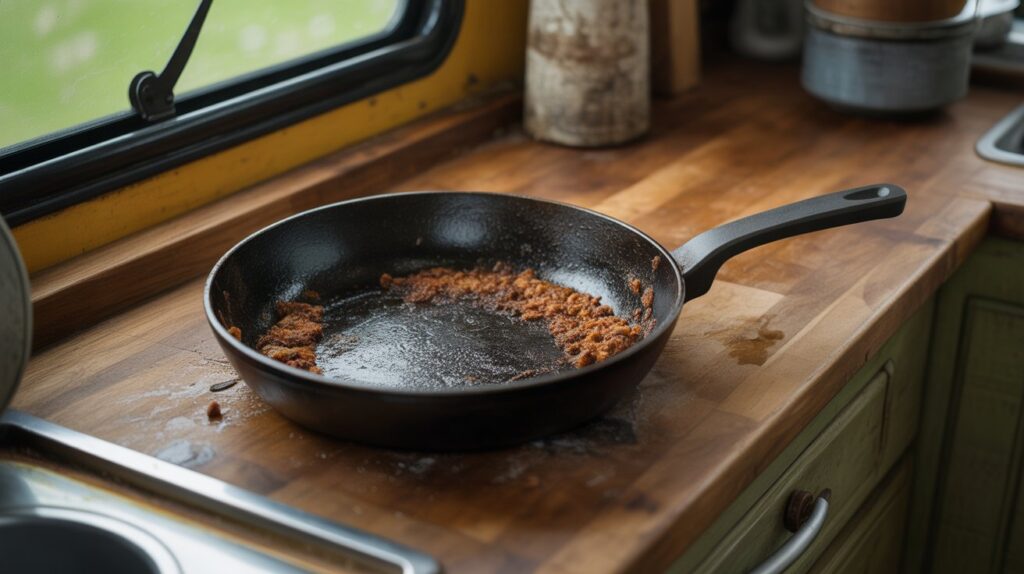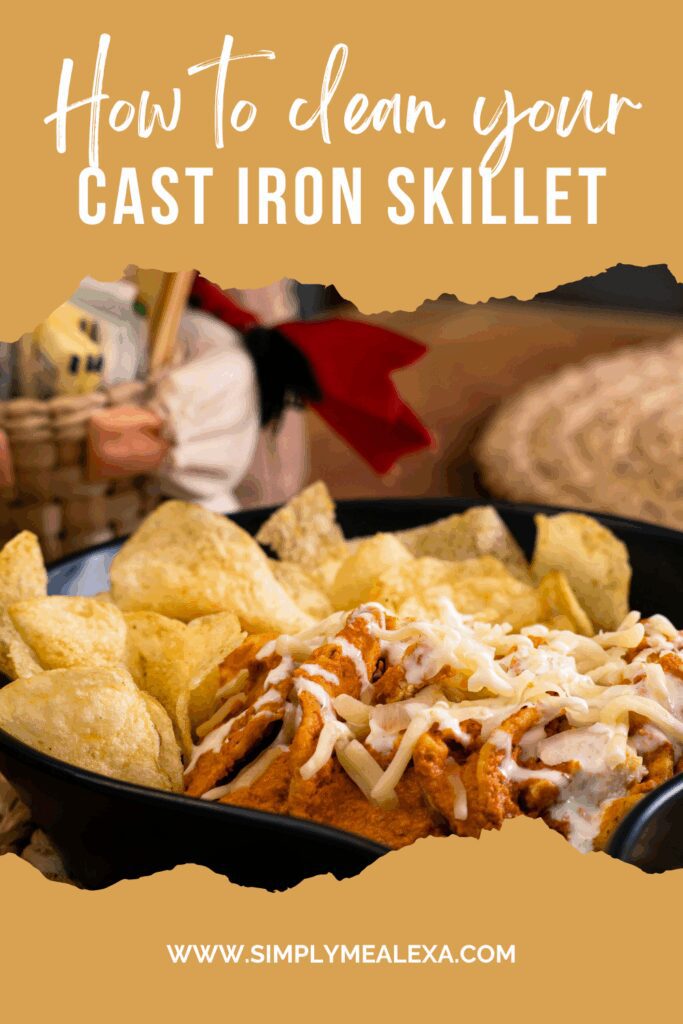Just a heads-up: This article may contain affiliate links, which means if you decide to shop through them, I may earn a small commission at no extra cost to you. It helps support this blog and keeps fresh content coming your way.
When I first got my cast iron pan, I almost gave up on it. I used it the wrong way, cranked the heat too high, threw food in like it was a non-stick pan from the shops, and everything stuck on the bottom of the pan. Eggs, veggies, even pancakes welded themselves to the surface. The hardest part is always in the beginning. That first stage feels impossible because no matter what you cook, it clings to the pan.
But here’s one thing to mention. Cast iron gets better with time. The more you use it, the less things stick. Cleaning it the right way keeps that process moving forward. It might feel like a hassle at first, but if you stick with it, you’ll end up with a pan that’s naturally non-stick, healthier than toxic coatings, and basically indestructible.

Step 1: Rinse While It’s Warm
After cooking, let the pan cool for a minute or two so it’s warm but not scorching. Rinsing while it’s warm makes it much easier to get food off. Run hot water over it and grab a brush, scraper, or chainmail scrubber.
A chainmail scrubber is a must-have. It’s tough enough for stuck bits but doesn’t scratch the surface.
Step 2: Salt Scrub for Stubborn Messes
When food feels welded on, salt is the secret weapon.
Sprinkle a tablespoon of coarse salt in the pan, add a splash of warm water, and scrub in circles with a brush or cloth. The grit lifts off the stuck pieces without damaging the seasoning. I keep some salt or bicarb soda on hand just for this.
Step 3: Dry It Completely
Moisture is the enemy. If you leave your pan wet, rust will show up faster than you think.
Wipe it dry with a towel, then place it on the stove over low heat for a few minutes. This evaporates anything the towel missed.
Step 4: Oil to Protect and Season

This is the part that turns cast iron into a non-stick machine over time. After drying, rub in a thin layer of oil to keep the seasoning strong.
Add about half a teaspoon of oil, rub it into the pan with a paper towel until it looks slightly glossy, then heat it on the stove for a couple of minutes.
I love using organic flaxseed oil. It bonds really well and helps the surface get smoother with each use.
What Not to Do
Don’t soak your pan in the sink
Don’t put it in the dishwasher
Don’t skip the oil step
Why Cast Iron Is Worth It
At first, it feels like cast iron is testing your patience. Everything sticks, cleaning feels tricky, and you might wonder why you didn’t just grab a cheap pan at the shops. But the longer you use it, the more rewarding it gets.
Cast iron lasts for decades. Some skillets are passed down through families. It works on stove tops, ovens, grills, even campfires. Best of all, it only gets better the more you cook with it.
If you don’t own one yet, this cast iron pan is a solid pick. It’s affordable, pre seasoned, and built to last.

FAQ
How do I clean my cast iron skillet after cooking?
To clean your cast iron skillet, start by wiping out any excess food with a paper towel. Next, wash it with mild soap and water using a soft sponge or cloth. Don’t use harsh chemicals or abrasive scrubbers, as they can damage the seasoning. For tougher messes, mix equal parts water and white vinegar in the skillet. Bring it to a boil, then scrub and rinse.
Can I put my cast iron skillet in the dishwasher?
No, it’s not recommended to put your cast iron skillet in the dishwasher. The high heat and harsh chemicals can damage the seasoning and cause rust. Instead, wash it by hand using mild soap and water.
How do I season my cast iron skillet?
To season your cast iron skillet, apply a thin layer of natural oil, like grapeseed, or flaxseed to the surface. Place the skillet in the oven at 350°F (175°C) for an hour. This allows the oil to polymerize and form a hard, non-stick surface.Let the skillet cool before wiping off any excess oil with a paper towel.
What kind of oil is best for seasoning my cast iron skillet?
For seasoning, use natural oils with a high smoke point, such as grapeseed oil or flaxseed. These oils are effective and safe for consumption.
How often should I season my cast iron skillet?
The seasoning frequency depends on how often you use it. Season your cast iron skillet after every cleaning, or at least once a month if you use it often.
Can I use my cast iron skillet for acidic foods like tomatoes?
While you can cook acidic foods in a cast iron skillet, it’s not best for long cooking times. Acidic foods like tomatoes can strip away the seasoning. It’s better to cook them for shorter times or use a different vessel.

View comments
+ Leave a comment